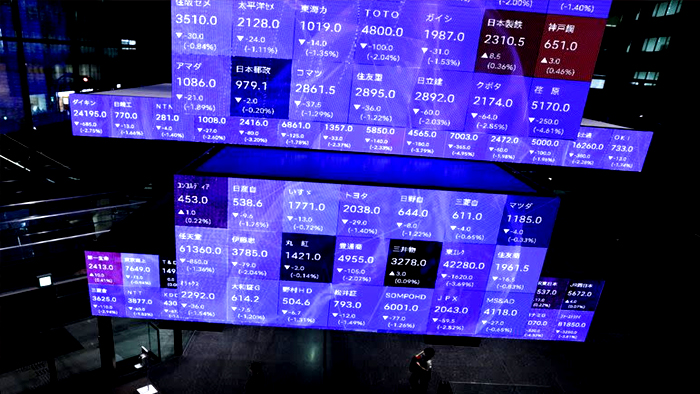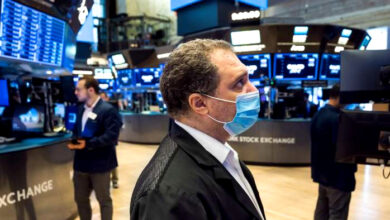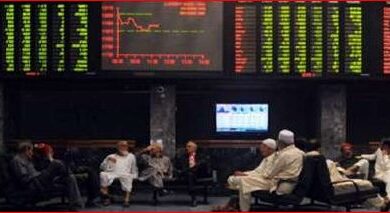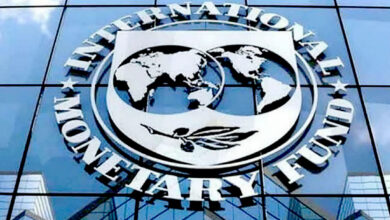As the dollar declines and risk events increase, Asian shares rise.

In anticipation of China’s economy picking up momentum as COVID-19 restrictions ease, Asian markets rose on Friday, following Wall Street higher. However, prudence ahead of a week full of risky events, including the Federal Reserve’s policy meeting, might dampen confidence.
The U.S. dollar continued to fall for a third day in a row, falling against the British pound, euro, and Japanese yen.
The European stock market’s confidence appears to be spreading, as the Euro Stoxx 50 futures for the entire continent are up 0.4%. Nasdaq futures jumped by 0.3% and S&P 500 futures increased by 0.2%.
A three-month high was achieved earlier in the week as MSCI’s broadest index of Asia-Pacific shares outside of Japan increased 1.1% in Asia. For the week,
A three-month high was achieved earlier in the week as MSCI’s broadest index of Asia-Pacific shares outside of Japan increased 1.1% in Asia. It was forecast to increase by 1.1% for the entire week.
The Nikkei in Japan rose 1.2%.
China’s Premier Li Keqiang, in comments carried by state media, said on Thursday the country’s shift in COVID policy would allow the economy to pick up pace, a day after a top-level party meeting pledged to focus on stabilising growth while optimising pandemic measures.
Investors are piling back into battered Chinese shares even though many economists warn a recovery could be long and bumpy, with the risk of a sharp surge in new infections.
The Hang Seng index in Hong Kong increased by 1.6%, and mainland developers gained a staggering 7.3%. Conversely, advances in Chinese blue chips were relatively muted.
In addition, commodity prices rose, with iron ore prices rising 4.5% on Friday to their highest level in six months on expectations of stronger Chinese demand.
Nomura analysts predict that 2023 will be an outperforming year for Asia, with a return of 12% by the end of the year. However, the first quarter may be bumpy due to lower sentiment brought on by negative economic data and the Fed’s late-cycle rises.
“We become even more bullish on AeJ stocks (Asia excluding Japan) and anticipate a much better 2023, powered by China’s opening-up and recovery drive and as the Fed nears the end of its tightening cycle in the months to come.”
Next Week in Review
Investors are focusing on U.S. producer price inflation figures later in the day, in addition to China optimism, for additional clues about the state of the U.S. economy after data overnight indicated some loosening in the labour market with a little increase in weekly unemployment claims.
The United States’ monthly consumer inflation statistics are also coming the following week. According to economists’ predictions, inflation likely moderated somewhat in November from a year earlier to 8.0%, down from 8.2% in October.
The Fed slowing its rate hike to 50 basis points next week has almost certainly been priced into futures, but it would need the target U.S. federal funds rate to peak at 4.9% by May.
According to Brian Martin, head of G3 economics at ANZ, “this deceleration is not an indication that the central bank’s mission is almost complete… the slower rate of hikes opens a new phase of the Fed’s tightening cycle.”
“The risks to our 5.00% terminal view are on the rise with inflation proving sticky and the labour market still vigorous,” the statement reads.
Next week, interest rate decisions will be made by the Fed, the European Central Bank, and the Bank of England as officials continue to put the brakes on economic growth by raising interest rates to combat persistently rising inflation.
On top of a 0.4% overnight decline, the U.S. dollar fell 0.2% against a basket of major currencies on Friday. It decreased 0.4% to 136.04 Japanese yen in value.
In addition, the euro increased by 0.2% against the dollar to $1.0576, just missing the five-month high of $1.0594.
After ending a three-day losing trend the previous day, Treasury rates started to go lower again on Friday. On expectations of weaker growth or the possibility of a recession, they declined earlier in the week to their lowest level in three years.
In comparison to its U.S. close of 3.493%, the yield on benchmark 10-year Treasury notes decreased by 3 basis points to 3.4597%. The two-year yield decreased to 4.29% from its 4.312% U.S. closing.
At about -83 bps, the yield curve is still the most inverted it has been since the early 1980s, indicating an impending recession in the United States.
Prices for oil increased after falling the day before as investors worried that a slowdown in the world economy would result in lower demand.
U.S. West Texas Intermediate (WTI) crude futures increased 0.7% to $71.96 per barrel, while Brent crude finished at $76.72 a barrel, 0.7% higher.
Gold increased a little. The going rate for spot gold was $1796.69 per ounce.





